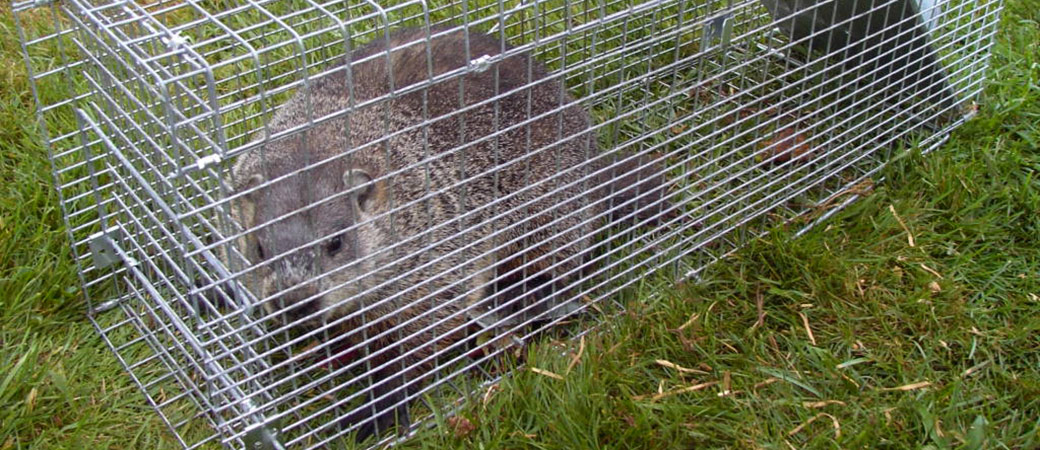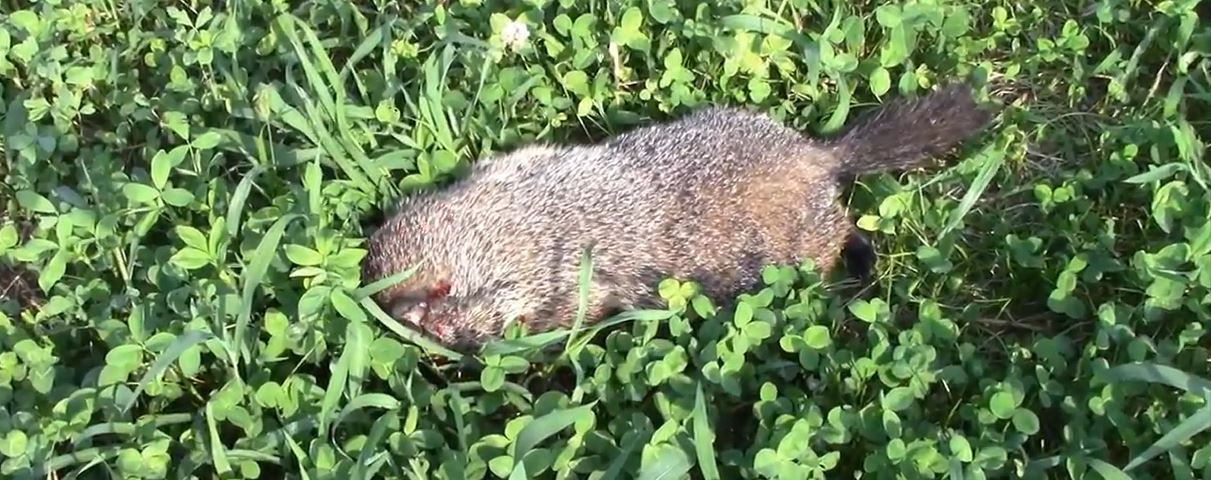How To Get Rid Of Groundhogs

Although we rely on groundhogs to let us know when winter is almost over, they are not the ideal guest for most people. Groundhogs, also known as woodchucks, have a reputation for destroying gardens as they stuff themselves to prepare for a long winter of hibernation. They also dig large dens or burrows which can weaken the ground and even cause concrete to collapse in some cases. This, combined with the risk of disease, means that you should try to get groundhogs off your property as soon as possible. When groundhogs are present, there are a few methods of getting rid of them, some of which work better than others.
Fences
If you don't have a groundhog yet or know that your resident groundhog is somewhere else, you can use a fence to deter these animals. In fact, building a fence around a garden or your entire yard will be the most effective method of preventing groundhogs. Simply make sure that you bury the fence at least a foot underground so groundhogs can't dig underneath it. If you are on a budget, consider chicken mesh or chicken wire as a fencing alternative.
Home Repairs
In some cases, groundhogs will also enter your home, particularly the crawlspace. You can prevent this by happening by making sure that there are no access points or holes leading to your crawlspace. If a groundhog is already inside, you can either wait for it to leave then seal up the holes or seal up the holes and then trap and relocate the animal. In some cases, exclusion may also work, which involves you sealing up most holes, waiting for the animal to leave, and then sealing the remaining hole.
Trapping
Any wildlife expert will tell you that the best method of getting rid of groundhogs is to trap them. Always pick a live trap as opposed to a kill trap as this is the humane alternative. You will not need to resort to lethal trapping and it is easy to find, set up, and use live traps.
When you buy the trap, do your best to keep your human scent off of it. This typically means washing the trap after buying and then wearing gloves to handle it. You should also make sure that you put the trap on top of a flat surface as this prevents it from closing too soon. The ideal location for the trap will be within a few feet of the main entrance to their burrow. A keen eye or a professional will find this entrance by looking for dislodged dirt from the animal entering and leaving. When using live trapping, be sure to check the trap at least every day. Leaving the trapped groundhog longer than this will expose it to unnecessary stress as well as risks such as dehydration and poor weather.
Before trapping the groundhog, do some research to check whether there are local regulations concerning where you can relocate the animal to. If there aren't any, select a field, wooded area, or meadow with access to food and shelter to improve the animal's chances of survival. Make sure to take it at least a few miles from your home and never handle the groundhog directly.

Repellents Don't Work
It only takes a quick online search to see that there are numerous repellents claiming to keep groundhogs away. You will find many chemical sprays that theoretically emit a smell that the animals can't stand. Keep in mind, however, that many of these sprays will not work on groundhogs. If they do work, they need to be reapplied regularly as the scent fades or after it rains. This can easily add up to a very expensive option.
There are also homemade repellents that people suggest, like castor oil and pepper. These options may work to some extent, but as with chemical sprays, you will need to reapply them regularly. Even mechanical repellents like motion sensors or high-pitched sound machines will only be temporary solutions which stop working as soon as you stop using them.
Avoid Killing
When a groundhog has torn up your prized vegetable garden or ruined the landscape you worked hard to create, it can be tempting to simply kill the animal and be done. The thing to remember, however, is that there is always a humane alternative to killing. Trapping and relocation will get rid of the groundhog without hurting either party and you can even have a professional take care of it for you.
Killing a groundhog with poison is dangerous to you, your family, and your pets as you will all be exposed to the chemicals. Shooting is impractical for most people as they don't have the necessary skill. Lethal traps may injure or kill the wrong animal or hurt a small child. None of these methods would kill the groundhog immediately, leaving it time to suffer. You would also still have to figure out how to dispose of the carcass. Instead, it makes much more sense to simply trap the animal and take it to a new home.
Read the How to get rid of groundhogs page or these other pages:
About Groundhogs: Appearance, Biology, Life Cycle, Habitat, Diet, And Behavior
Groundhog Prevention Tips: How To Keep Groundhogs Away
Groundhog Trapping: How To Trap A Groundhog
Groundhog Repellent
How To Kill A Groundhog
How To Get A Groundhog Out From Under A Shed Or Porch
for helpful information and to learn more about How To Get Rid Of Groundhogs

